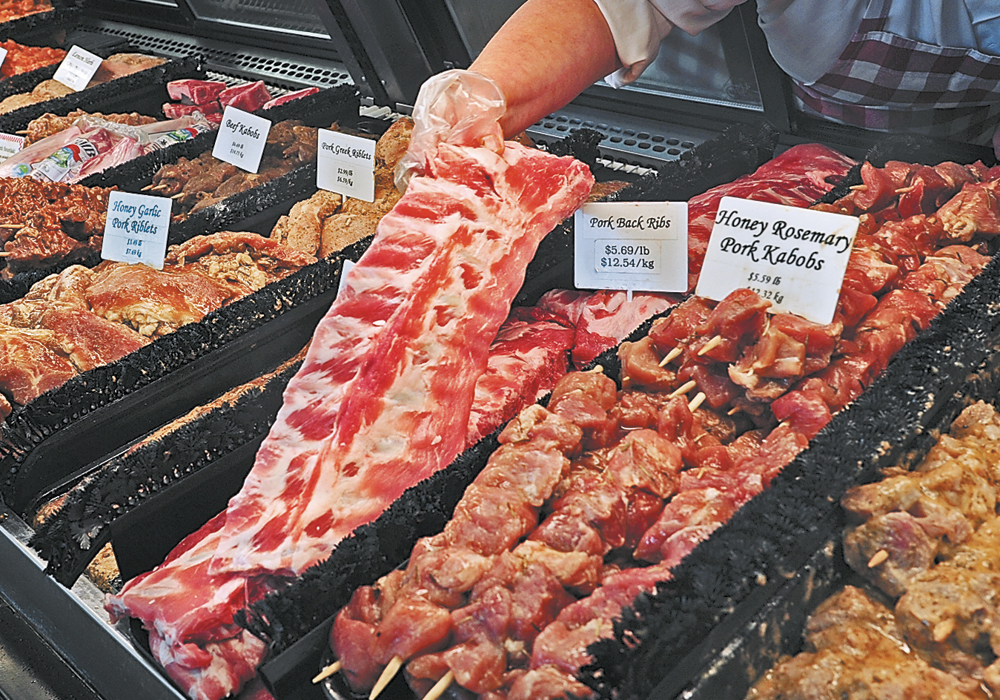Canada’s pork sector was drawn to China like a moth to fire but is now getting singed by the flames.
Business to China was booming in the first half of 2019. It rapidly became Canada’s top export market by volume in the wake of the devastation caused to China’s hog herd by African swine fever.
That all came to a grinding halt on June 25 when China discovered a fraudulently certified shipment of Canadian pork.
Rick Bergmann, chair of the Canadian Pork Council, used the fire analogy to describe the plight of hog producers.
Read Also

Farming Smarter receives financial boost from Alberta government for potato research
Farming Smarter near Lethbridge got a boost to its research equipment, thanks to the Alberta government’s increase in funding for research associations.
“Right now we’re uncomfortably warm in this situation,” he said.
Packers and processors are also feeling the heat.
“It’s certainly a struggle from our side as well,” said Chris White, president of the Canadian Meat Council.
China paid good money for hard-to-sell products like pig heads and intestines. It is proving exceedingly difficult to replace that market.
“If you haven’t identified a (replacement) market then that product becomes effectively useless and it is just used for rendering,” said White.
Packers, processors and producers are all seeking compensation from the federal government for their losses. Producers want $260 million in direct payments. Packers and processors are seeking another $100 million.
Federal Agriculture Minister Marie-Claude Bibeau dodged a direct question asking for a response to the requests for aid.
“Canada’s focus is on working with China to reassure them of the integrity of Canada’s certification process and to resume exports of meat products,” she said in an email.
“(Canadian Food Inspection Agency) officials continue to engage with Chinese officials to resolve this issue as soon as possible.”
Bibeau said a pork and beef government-industry working group has been established to devise strategies to strengthen the sector and explore alternative markets.
In the meantime, Canadian producers are being hurt by slumping pork prices that are inextricably tied to United States prices. Those values have been plummeting in the midst of the trade war between the U.S. and China.
Canadian farmers are frustrated that their counterparts in the European Union and Brazil are filling the massive void in Chinese pork production and reaping the rewards of escalating prices.
Canada was one of the exporters that had been benefiting from the devastation African swine fever has caused to China’s hog sector.
Rabobank estimates half of China’s hog herd will be lost in 2019 and that there will be a 25 percent drop in pork production this year. It is forecasting a further 10 to 15 percent decline in pork production in 2020.
The Chinese government says it has lost more than 100 million hogs to the disease.
According to the Dim Sums blog, the Chinese government estimates the country will have a 10 million tonne pork deficit this year, which is more than is traded in international markets annually.
Poultry is the main substitute for pork but China will struggle to increase poultry production by three million tonnes in 2019, said a government official.
That is why Canada’s pork exports to China shot up 50 percent for the first half of 2019, totalling 217,193 tonnes, up from 145,085 tonnes for the same period a year earlier.
Exports to nearly every other country fell as Canada cut back on sales to other customers to help fill the void in China.
Over two months have elapsed since Canadian hog producers have been shut out of China. They are hurting as they deal with depressed prices and the loss of what had become their top market.
Hog producers are seeking what their American counterparts have received in the form of two ad hoc payments from their federal government, one amounting to US$8 per head in December 2018 and another for $11 per head in July 2019.
That same level of aid would result in a direct payment of $260 million to Canadian producers.
White said packers and processors are having a tough time finding replacement markets for China. Vietnam and Cuba are two markets that have been identified as targets.
Packers and processors have quantified the amount and dollar value of product on the water, at the port and in freezers destined for China as of June 24 and subtracted what they received for that product in other markets.
The difference is the $100 million they are seeking from Ottawa.
“It’s going to be tough for government to give that to industry,” said White. “The reflective reaction of government is not to give compensation.”
Bergmann said it is obvious that U.S. politicians acknowledge the importance of the agriculture sector to the economy.
“I question sometimes if that has been forgotten here,” he said.
Bergmann said pork producers are frustrated that they are the victims of a political squabble between Canada and China.
“It’s not our fight but we’re getting a lot of bruises because of it,” he said.
White said China had a legitimate complaint about fraudulent labelling that has caused the CFIA to change some policies.
But it was supposed to be a temporary suspension of trade that is now going into its third month. He believes the problem needs to be escalated to Prime Minister Justin Trudeau’s desk.
“If he could find a way to have an opportunity to talk to (Chinese) Premier Li (Keqiang) that would be most helpful,” said White.
The Canadian Pork Council doesn’t begrudge the $1.75 billion trade compensation aid package recently given to Canada’s dairy producers.
“We’re happy for them but we’re sad for ourselves,” said Bergmann.
“We want to have parity in the treatment that is given.”


















